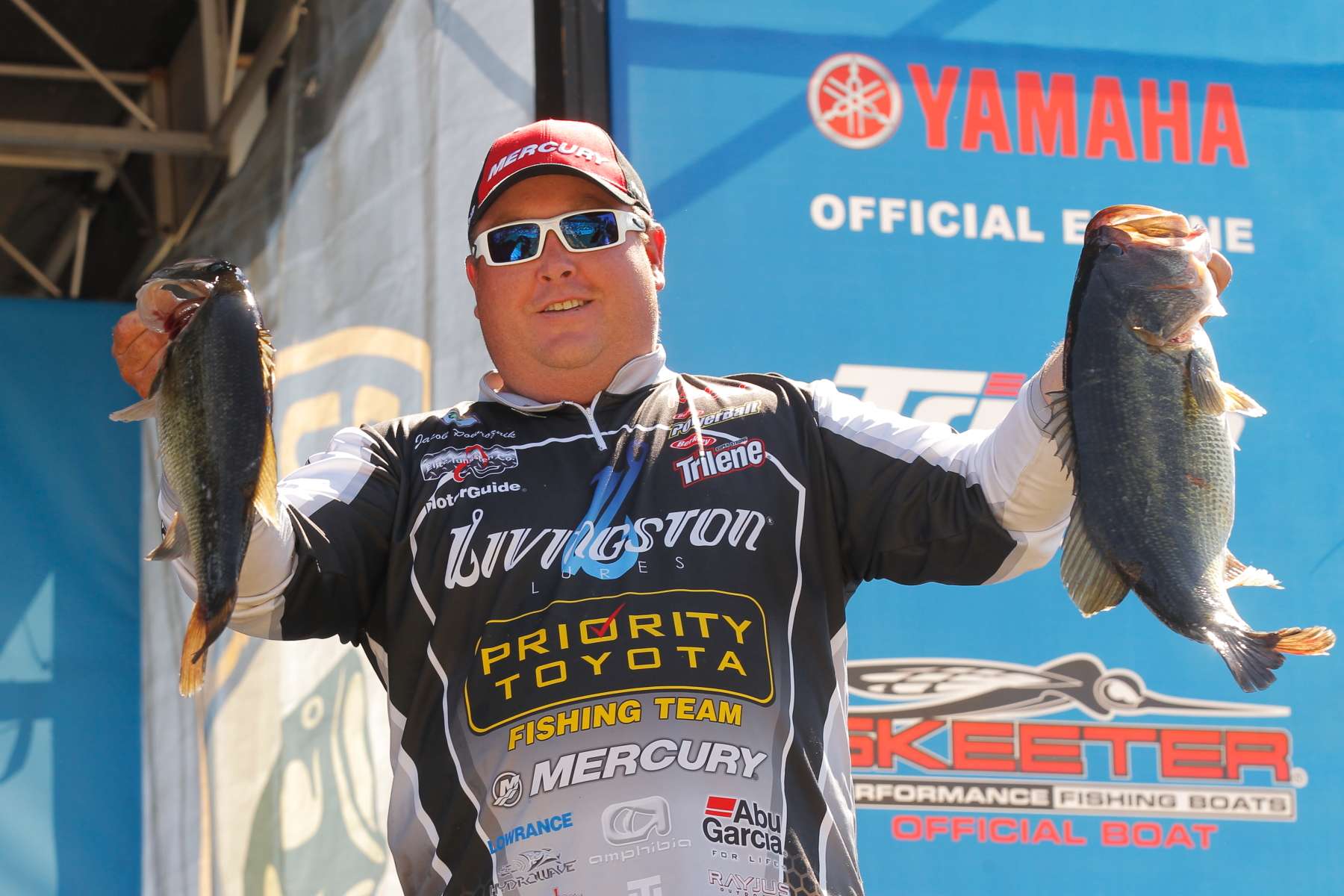
Growing up on the tidal waters of the James River where he still resides today, Bassmaster Elite Series pro Jacob Powroznik realized he couldn’t skip cypress trees throwing a 1/16th-ounce jighead and a little worm on a baitcaster.
So with the help of legendary B.A.S.S. angler Woo Daves – a close friend of his father – he learned how to use a spinning rig.
Now, he credits 75 percent of his prize money to a spinning rig’s versatility.
“The first time I fished with him, he picked me up from school in the eighth or ninth grade two days before school was out and we went to Birmingham, Ala., to Logan Martin to practice for the 1993 Bassmaster Classic for three weeks,” Powroznik said. “We skipped boat docks with a spinning rod, 8- to 10-pound monofilament and 1/16th-ounce Texas-rigged Zoom Finesse worms, who Woo was sponsored by. We crushed them all day long most every day.”
Powroznik realized this could make him a lot of money someday.
So now, when fish are shallow, he’ll use spinning gear to get far up under docks and cover that most anglers can’t. It allows him to reach fish that haven’t seen a lure in a while.
He’ll run 10-pound High Seas Braid with a 10-pound High Seas Fluorocarbon leader spooled on a Quantum EXO 30PTI reel and matching 7-foot, 7-inch medium heavy rod. He’ll scale down to 6-pound braid in current to get the bait to the bottom faster.
For skipping docks, he prefers fluorocarbon for better control as it comes off the spool.
“You must be able to read how far your bait is going to fall,” Powroznik emphasized.
A fellow angler tutored him on the ins-and- outs of trout fishing in a stream, and he related the lessons he learned to bass fishing.
“It teaches you how to present a bait to a bass in current, so that I can pull up to a log knowing where my bait is going to go once it’s in there,” Powroznik said. “A lot of the guys, they’re probably on some of the best stuff on the whole river, but they don’t know how to present the bait to them. I’d rather be efficient and quiet, using my spinning rod to place a worm waddling down in front of their face knowing they have to eat it.”
Powroznik uses his depthfinder to find drops or where a log extends to, while reading the seams, slack water and eddies. He’ll calculate where he has to throw his bait to get it to the fish, especially if there is current.
“Always try to get away with the lightest weight you can,” Powroznik said. “The heavier the weight, the more you’ll get hung up. But you still need to be able to keep the bait on the bottom. In the past, I’ve thrown a 1/16th-ounce shaky head when the rest of the field was throwing 1/4-ounce baits, and they weren’t getting half the bites I was.”
Powroznik says the V&M 6.5 Trickster, a slender worm with a fat tail, is his “go-to” bait. He uses it Texas-rigged, on a drop shot and on a shaky head.
Color choices are simple: Cloudy weather means green pumpkin, and if the water is clear and the sun is high, he uses watermelon. He sometimes dyes the tail chartreuse on the green pumpkin lures to mix things up.
When faced with grassy conditions like he was at the 2014 Bassmaster Elite Series event at Cayuga Lake, a drop-shot is his first alternative. He finished sixth in that tournament, using some sound logic.
“If you have grass growing 6 inches on the bottom, when the worm sinks, it’s hidden on the bottom,” Powroznik said. “When you have a drop-shot, that worm sticks up on the grass and it’s visible at all times. The strike zone is a whole lot wider than when you are hopping a bait through the grass.”




